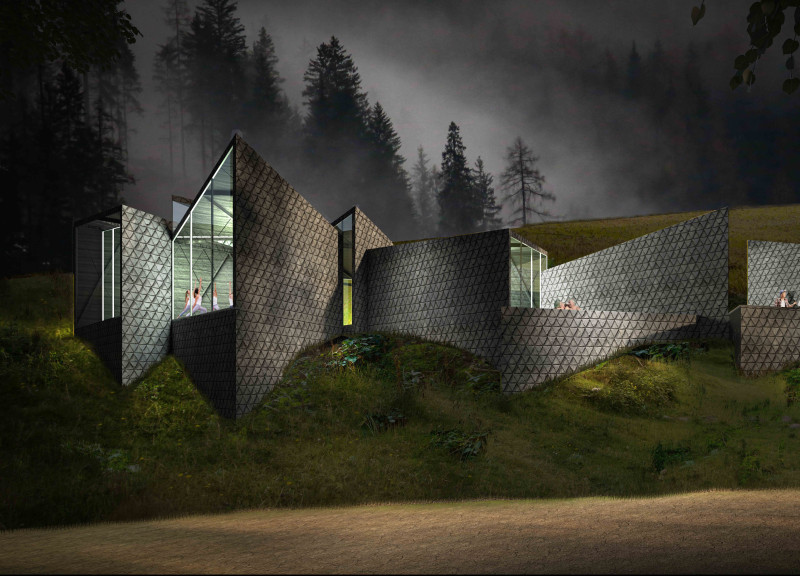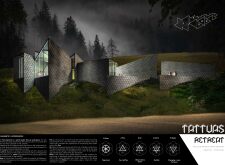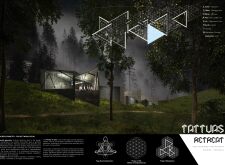5 key facts about this project
The retreat is organized into distinct modules that are inspired by sacred geometry, emphasizing interconnectedness and balance. Each module represents an element—Ether, Water, Fire, Air, and Earth—and caters to specific functions, contributing to the overall experience. The architectural design facilitates spiritual practices while ensuring physical comfort and sociability among users.
Sustainable Material Selections
The architectural design incorporates locally-sourced materials to minimize environmental impact. Shale cladding connects the structure visually and physically to the surrounding landscape. Insulated wood laminated panels enhance the building’s energy efficiency and thermal performance, contributing to a comfortable indoor climate. Varnished laminated wood elements add to the aesthetic quality while ensuring structural integrity. Furthermore, the integration of water tanks for recycled rainwater illustrates a practical approach to resource management.
Innovative Spatial Configuration
The retreat features a spacious yoga room enriched by large glass panels that allow natural light to permeate the space. This design encourages a seamless connection with nature, creating a calming environment ideal for meditation and yoga practices. Additional areas, such as the tea/coffee room and observatory, promote social interaction and contemplation, enhancing the overall communal atmosphere.
The undulating roofline, inspired by the region's natural forms, contributes to both aesthetic appeal and functionality. The sharp angular shapes not only distinguish the building but also facilitate water drainage and reduce solar heat gain. This thoughtful approach to design addresses climate considerations while maintaining a visually engaging structure.
Functional and Versatile Design
The Tattus Yoga Retreat emphasizes versatile spaces that adapt to various uses, reinforcing community engagement. The layout encourages interaction among visitors, fostering a sense of belonging and shared experience. These design choices reflect an understanding of the retreat's role in promoting collective wellness.
By integrating sacred geometry, promoting sustainable practices, and creating functional spaces, the Tattus Yoga Retreat sets a standard for contemporary architectural projects focused on holistic well-being. The design considerations and material selections make this project a relevant study in contemporary architecture.
For those seeking a deeper understanding of the Tattus Yoga Retreat, it is beneficial to explore the architectural plans, sections, and design elements presented. Examining these aspects will provide insightful perspectives on the architectural ideas that inform this unique project.


























